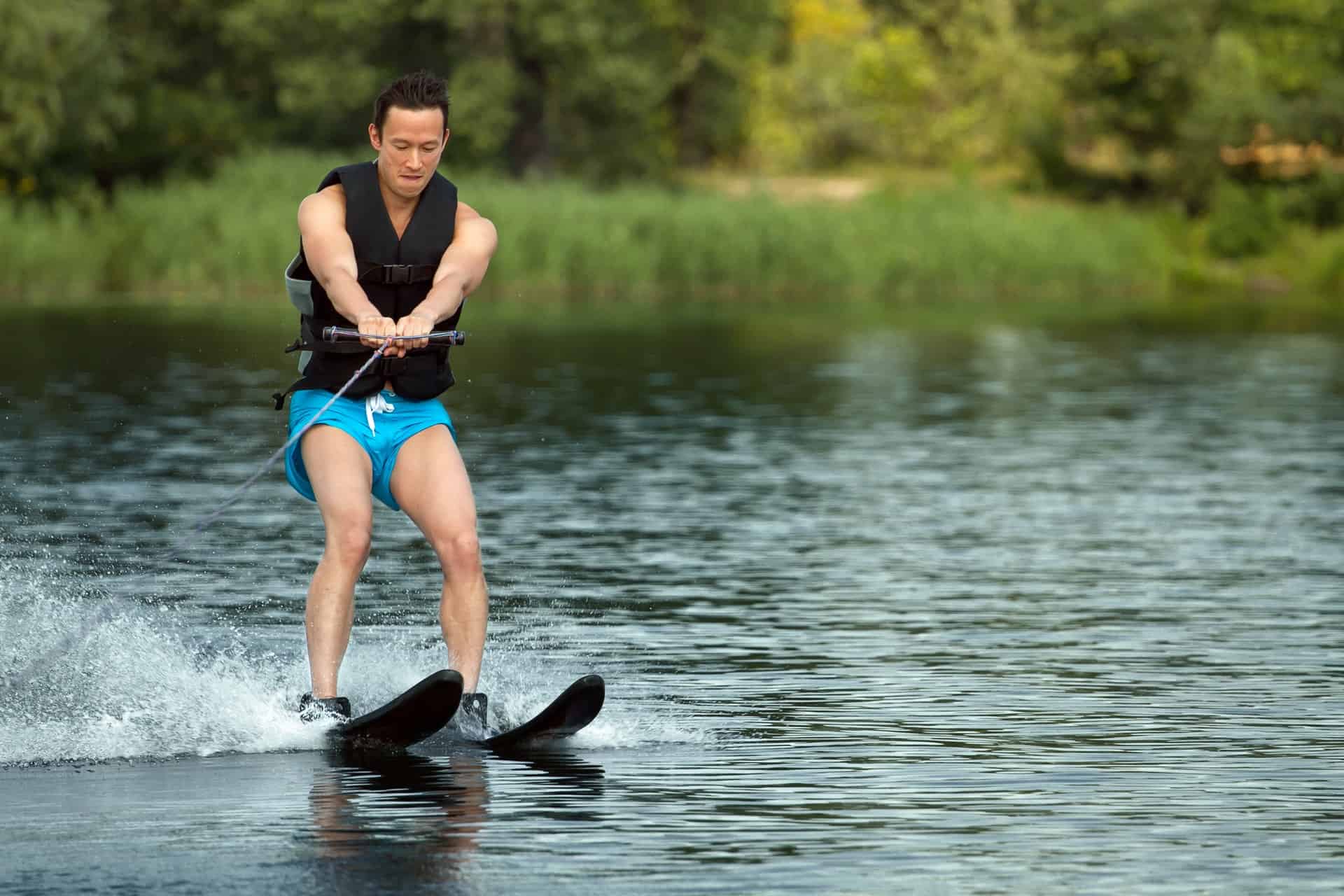
Want to learn to water ski? Where the land ends is where the fun begins for some!
You must wear a life jacket or, preferably, a personal flotation device (“PFD”). Not only is this essential safety equipment. It also provides buoyancy in the water while you put on your skis. It should fit tightly around your body, completely covering your chest, abdomen and back. And it must be the right size and buoyancy for your weight. So make sure you wear the right PFD before you start learning.
These have a slight stretch to avoid sudden pulling (aka whip smacking) on turns or crossing the kilwater from the boat. It should be a maximum of 23 m long from the handle to the boat. Make sure your rope is designed for water ski use.
A child will need much smaller skis than an adult. The skis have a closed back that you put your feet into. It is possible to ski on one ski, then the places for the feet are one behind the other. But about that in another post.
Equally important is the shape of the bottom of the water ski. When learning, you will need what is known as a base-concave bottom. Typically, water skis with this shape are wider and more stable, and easier to keep in a straight line.
Now that you have your equipment ready, it’s time to make sure both skier and driver understand each other. There are only seven hand signals to learn:
Although you’ll look forward to getting out on the water, it’s a good idea to practice on dry land first. On a sandy beach, you can safely stand on your skis without damaging them. Grab a handle on a water ski line and bend your knees until you sit on your skis – mimicking the position in the water. Have someone else pull on the rope until it pulls you up to a position that looks like you are sitting in a chair. Make sure your knees stay together and your arms are straight.
main photo: unsplash.com/Kostiantyn Li